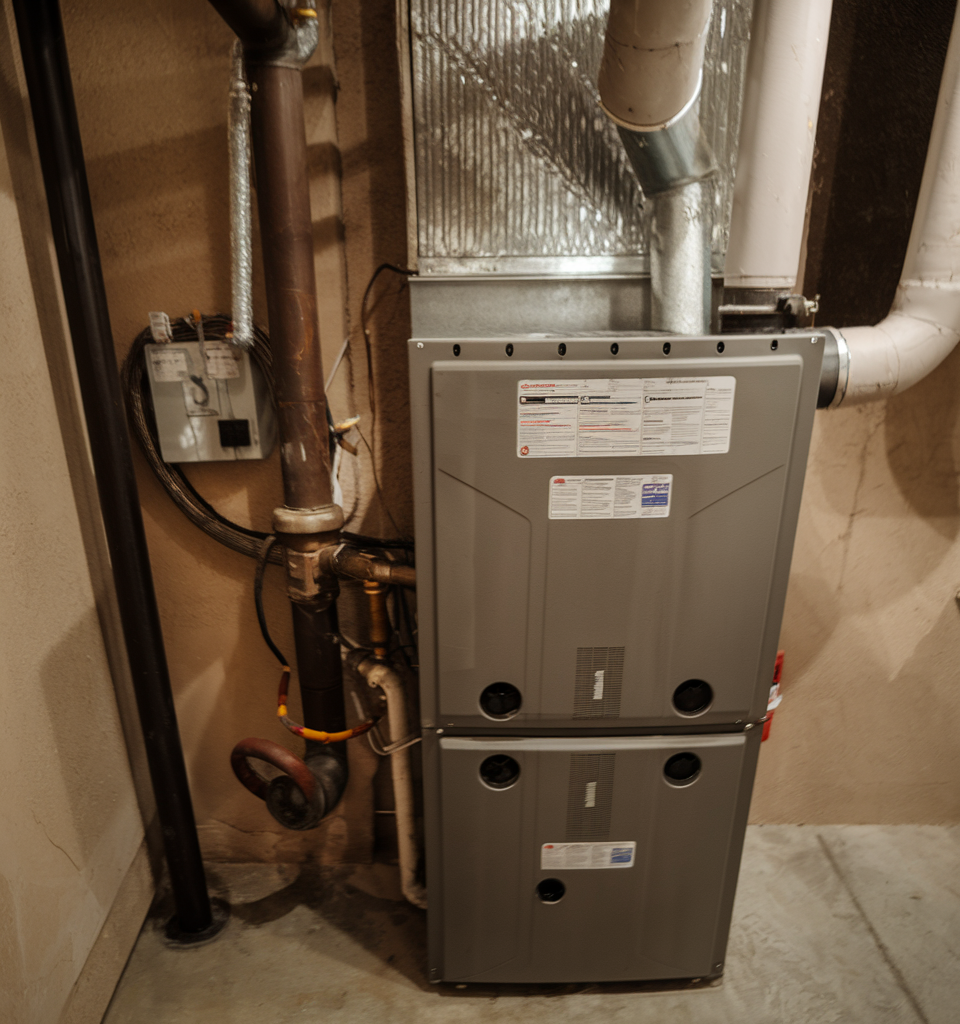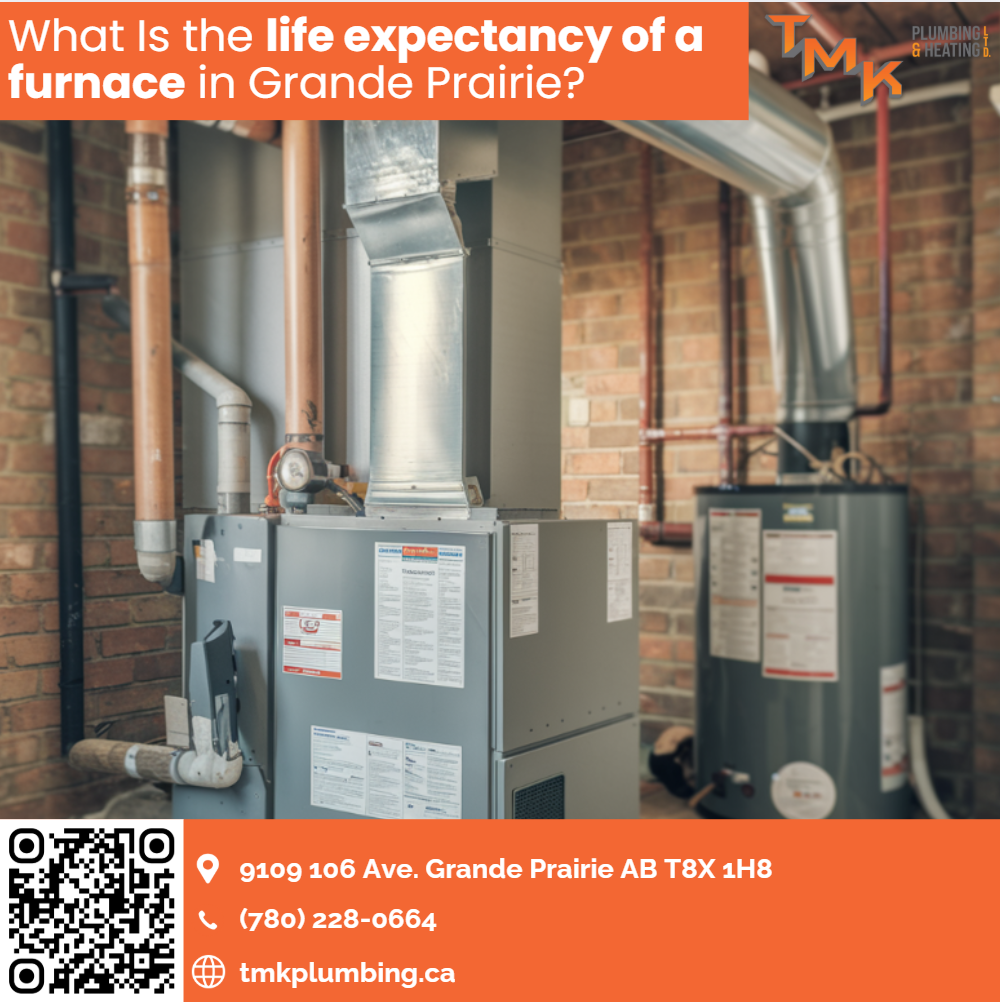
If you’re a homeowner in Grande Prairie, you’ll want to know that your furnace’s lifespan typically ranges from 15 to 30 years, depending on several key factors. While gas furnaces usually last 15-20 years, oil furnaces can reach 25 years, and electric models often surpass the 20-year mark. However, these numbers aren’t set in stone, and understanding what affects your furnace’s longevity can help you maximize its service life.

A typical furnace in Grande Prairie can last between 15 to 30 years, with most homeowners opting for replacement around the 20-year mark. While our cold climate means your furnace works harder during winter months, this doesn’t greatly reduce its expected lifespan when properly maintained.
You’ll find different lifespans depending on your furnace type. Gas furnaces typically serve 15-20 years, while oil furnaces can reach 25 years due to their sturdy construction. Electric furnaces, with fewer moving parts, often surpass the 20-year mark.
Your furnace’s heat exchanger, which typically comes with a 20-year warranty, serves as a reliable indicator of your system’s potential longevity. To maximize the unit’s service life, regular maintenance by a certified technician is essential for optimal performance. Regular maintenance, including annual inspections and filter changes, can help your furnace reach its maximum lifespan potential.
Several critical factors determine how long your furnace will continue operating efficiently and safely in your home. The type of system you’ve chosen plays a considerable role, with electric furnaces typically lasting 20-30 years compared to gas units’ 15-20 year lifespan. Installation quality directly affects performance, as incorrect sizing and poor ductwork design can lead to premature system failure. Incorrect thermostat settings can place unnecessary strain on your furnace and reduce its lifespan significantly.
Your maintenance habits greatly impact longevity. Regular professional tune-ups, clean filters, and prompt repairs help prevent major breakdowns. Additionally, your usage patterns matter – frequent operation and dramatic temperature changes strain the system. In Grande Prairie’s cold climate, your furnace works harder and longer than in warmer regions, which can accelerate wear on components and reduce its overall lifespan.
Recognizing the warning signs that your furnace is approaching retirement can help you plan for replacement before a complete system failure occurs. Watch for increased operational noise, frequent breakdowns, and unstable temperature control throughout your home. If you notice yellow pilot flames or soot accumulation near vents, these could indicate dangerous combustion issues that require immediate attention.
Physical signs like external rust, visible cracks in the heat exchanger, or loose panels causing rattling sounds suggest serious deterioration. Regular preventative maintenance checks during fall can significantly extend your furnace’s operational life.
Your furnace’s efficiency typically declines after 10-15 years, leading to higher energy bills and inconsistent heating. When your unit reaches 15-20 years old and repair costs become frequent, it’s time to evaluate replacement, especially if you’re experiencing short cycling or wide temperature swings between heating cycles.
While regular professional maintenance is essential for extending your furnace’s lifespan, you’ll need to implement a thorough care strategy that includes proper air filtration, consistent operation, and ductwork maintenance.
Schedule annual HVAC inspections to detect issues early and maintain warranty compliance through documented service visits. You’ll want to replace air filters every 30-90 days, depending on the filter type, and avoid using overly restrictive MERV filters that could impede performance. Keep your thermostat settings consistent to reduce component wear, making only moderate temperature adjustments of when needed.
Don’t forget about your ductwork – seal any leaks to prevent 25-40% energy loss, and guarantee connections are tight during inspections.
Professional HVAC services play a crucial role in extending your furnace’s lifespan through thorough maintenance, expert installations, and emergency repairs. Regular annual tune-ups, filter replacements, and component inspections help identify potential issues before they become major problems, while maintenance plans guarantee your system receives consistent care.
When you work with licensed technicians like TMK Plumbing & Heating, you’ll benefit from their expertise in proper system sizing, ideal placement, and precise ductwork installation. They’ll perform type-specific maintenance, including gas leak detection, electric element inspections, and oil filter servicing.
You can count on 24/7 emergency response when needed, with rapid diagnostics and safety-first protocols. These services not only maximize your furnace’s efficiency but also contribute to sustainability through reduced emissions, improved air quality, and energy conservation.